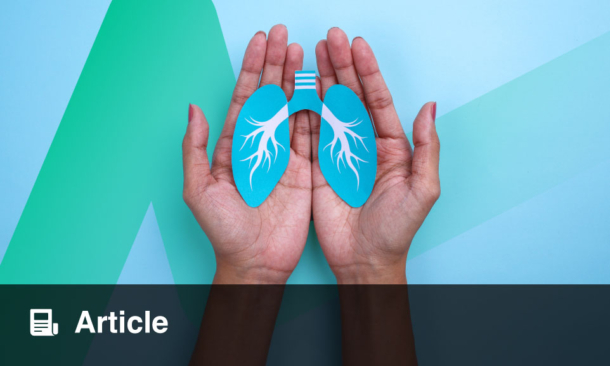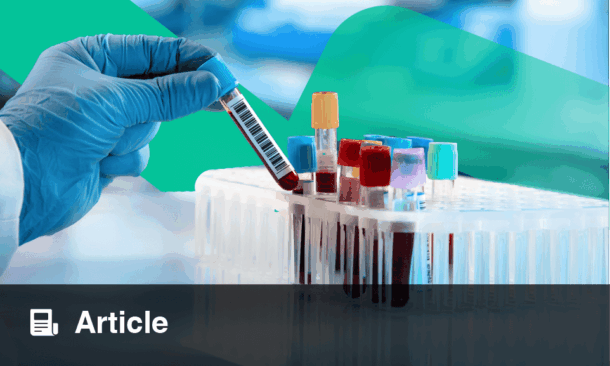Lucilla Piccari | Research Physician, Pulmonary Hypertension Unit, Hospital del Mar, Barcelona, Spain; Coordinator of the Spanish Registry of Pulmonary Hypertension Associated with Respiratory Disease (REHAR)
Citation: EMJ Respir. 2025; https://doi.org/10.33590/emjrespir/MZNR8179
![]()
As coordinator of the REHAR registry, you’ve had a unique perspective on pulmonary hypertension (PH) associated with respiratory diseases in Spain. What have been the most revealing insights from this national data, and how are they influencing clinical strategies?
Some of the most interesting data are precisely those illustrating the reality of clinical practice of physicians attending patients diagnosed with Group 3 PH in Spain. A registry is obviously not a strict depiction of practice, as it relies on the voluntary reporting of data, which investigators do in their own spare time, but it offers an idea of the characteristics and challenges of this diagnosis. For instance, there is an obvious bias towards diagnosing severe PH, which is usually overrepresented in registries, but interestingly only about half of the patients with lung disease and severe PH seem to receive pulmonary vasodilator treatment, which is striking considering that this is precisely the category of patients in which the current European Respiratory Society (ERS)/European Society of Cardiology (ESC) guidelines for PH recommend considering treatment. In the guidelines, the diagnosis of Group 3 PH with right heart catheterisation is advised to be considered if severe PH is suspected, and for phenotyping or management strategy purposes, to be performed in an expert PH centre, with pharmacologic treatment to be considered on a case-to-case basis.
Looking at the other end of the spectrum, we find that even taking into account underreporting, many patients diagnosed with mild-to-moderate PH associated with lung disease are not followed up in the PH centres where they were diagnosed, possibly because they are usually also not treated with vasodilator therapy. We are witnessing a growing interest in these forms of PH, though, so hopefully there will be greater attention to these patients in future practice
Your recent Spanish Society of Pulmonology and Thoracic Surgery (SEPAR) position paper offers systematic guidance on diagnosing pulmonary hypertension associated with lung disease. What are the key takeaways for clinicians from this review?
This was a very interesting experience, led by Diego A. Rodríguez, Head of the Pulmonology Department at Hospital del Mar, Barcelona, Spain, and prominently involving the pulmonary circulation assembly of SEPAR, in collaboration with the assemblies for chronic obstructive pulmonary disease (COPD), interstitial lung disease (ILD), sleep disorders, mechanical ventilation, and lung transplants. The intended audience for this document was the general pulmonologist and/or pulmonologist specialised in other diseases, who is in doubt about when to suspect PH in their patient with respiratory disease; unfortunately, symptoms and signs are very non-specific and it is hard to discern whether a patient is experiencing a progression of their underlying lung disease, or whether they are developing PH at the same time. We developed GRADE-tiered recommendations for each of the three questions, focusing on COPD, ILD, and hypoventilation-syndrome associated PH: what clinical signs lead to the suspicion of PH; which tests to perform when the suspicion arises; and when to refer a patient for right heart catheterisation. For each associated condition, we also developed a flow chart to help clinicians navigate the diagnostic process. One of the main takeaways, though, is that there is not a lot of high-quality data on the diagnosis of Group 3 PH, as the only Class Ia recommendations in the whole document regard the opportunity to perform right heart catheterisation when listing for lung transplant or lung volume reduction surgery. As the saying goes, more studies are needed.
You also coordinate the SUPPORT project, which aims to unify international efforts in Group 3 PH. What are the biggest challenges and opportunities in fostering global collaboration on such a complex and often under-recognised condition?
The first and foremost challenge in both clinical practice and research on Group 3 PH is that, up until not long ago, it was considered that PH was the “natural” evolution of respiratory diseases, almost like an inevitability. We now know that not only is it not inevitable (in fact, many patients with advanced lung disease never develop PH, so there must be different phenotypes), but that pulmonary vascular disease starts at a very early stage in both COPD and ILD, and there is an interdependence in their pathogenesis. If we can understand which patients will develop PH, how PH will progress, and whether it will respond to pulmonary vasodilators, we will be able to help patients with Group 3 PH much more effectively. The possibility of a lung transplant aside, therapeutic options for these patients are still very few and far between, especially in Europe. In this context, the partnership with John Wort, Clinical Lead for Pulmonary Hypertension at the Royal Brompton Hospital, London, UK, and Patrizio Vitulo, Head of the Pulmonology Department at ISMETT, Palermo, Italy, was created to pool data from Spain, Italy, and the UK in order to identify phenotypes in what are still underdiagnosed disease groups.
We published the first manuscript arising from this collaboration in 2022,1 where we were able to identify a fundamentally different prognosis profile in patients with COPD and ILD based on their haemodynamic strata: patients with COPD had significantly worse survival only in the presence of severe PH, compared to not having PH or suffering only mild-to-moderate PH; in contrast, patients with ILD presented worse survival for any haemodynamic level of PH, from the mildest forms to the most severe. We concluded that it is fundamental to analyse patients with COPD and ILD with PH separately because important differences between the two diseases might get lost in the noise. Now we’re moving onto the next step of the project, involving deep imaging phenotyping.
Your research also touches on the intersection of pulmonary vascular disease, environmental pollution, and climate change. How do you think respiratory clinicians should be responding to these emerging environmental threats in both research and patient care?
I think that the crucial intersection between the health of the people and the health of the planet cannot be emphasised enough. We have known for decades that pollution is a causative factor of many prevalent disorders, including cardiovascular, neurologic, and metabolic diseases, but there is much work that needs to be done to illustrate the severity of the problem. When we started looking into the effect of environmental pollution and climate change on the pulmonary vasculature, my colleague Mona Licthblau, Vice Head of Pulmonary Hypertension at University Hospital Zurich, Switzerland, and I never thought we would find so many preclinical and clinical evidence; however, when it came to clinical studies involving patients with PH, observational data were much scarcer. We, therefore, need to increase research efforts in this field. In Spain, we will start a new project looking at “external” factors affecting PH, among which are environmental pollution and climate change.
On the other hand, I think that most people don’t appreciate the extent to which extreme weather events (which are becoming more common) and environmental pollution are linked to the same root causes, primarily burning fossil fuels. This is why, with Naftali Kaminsky, Chief of Yale Medicine Pulmonary, Critical Care and Sleep Medicine, New Haven, USA, and renowned climatologist Michael E. Mann, University of Pennsylvania, USA, we wrote an opinion piece 2 years ago,2 suggesting that respiratory societies, such as the American Thoracic Society (ATS) and the European Respiratory Society (ERS), should enforce a ban on fossil fuel-sponsored research and researchers just as they did with tobacco-sponsored endeavours 20 years ago. Ultimately, doctors have a duty to advocate for their patients’ health, and it is patently clear how this involves demanding to stop burning fossil fuels and polluting our environment as much as possible. We have the solutions, we just need the political and social will to implement them.
The voice of the patient is a growing focus in your recent publications. What have you learned from listening to patients with PH and chronic lung disease, and how should this shape research and therapeutic development?
One side of the coin is that, if clinicians are puzzled as to where parenchymal lung disease stops and PH starts, patients are even more confused. This has many practical implications. For one, it is hard to even contact patients who suffer from Group 3 PH and are willing to help researchers better understand their point of view. However, on the clinical practice side, patients who have spoken to us have illustrated how ILD and PH are often treated in parallel ‘silos’, where the specialists of each condition treat their own side of the lung and don’t adequately communicate with each other. Some patients were given sparse information, and some only realised they had PH during subsequent visits, long after the diagnosis. This has led me and many colleagues to start promoting the idea of multidisciplinary committees, where physicians with different expertise can discuss clinical cases and bring their own knowledge as well as learn from their colleagues. From a research point of view, we also need to involve patients in observational and pharmacologic studies to better understand what matters to them in terms of diagnostic process and treatment outcomes.
The other side of the coin in this journey has been realising how profound and pervasive the mark of PH is on patients with lung disease. We are used to considering symptoms and quality of life as things that can be measured through a quick questionnaire, but really, the implications of deep breathlessness, reduced ability to perform even simple tasks, oxygen therapy, and the repercussions these have on their social, financial, and emotional lives are hard to overstate. Listening to patients’ voices is the best way to renew our resolve to treat, and hopefully, one day, even cure PH associated with lung disease.
Looking ahead, what developments in PH treatment, particularly for Group 3 PH, are you most hopeful about, and how close are we to seeing meaningful breakthroughs in clinical practice?
In the last few years there have been several breakthroughs in PH management that make me hopeful for the future. First and foremost, the success of the INCREASE trial with inhaled treprostinil, which provided a potential treatment to patients with ILD-PH who suffer the worst survival within Group 3 PH, itself the group with the worst prognosis among all patients with PH. This success has been a formidable boost in bringing about renewed interest in randomised clinical trials in the field, with at least three other compounds or formulations already in the research pipeline for patients with ILD-PH. Unfortunately, an analogous randomised clinical trial to test inhaled treprostinil in COPD-PH had negative results, and despite these patients likely representing one of the biggest groups of patients with PH, research is still lagging behind in this field. However, the momentum is there to build on previous evidence and possibly mark a before and after in the treatment of Group 3 PH, just as the beginning of the 20 was for pulmonary arterial hypertension, with the rise of the first oral compounds.
Furthermore, in my opinion, some newer agents and formulations that have recently appeared in the PAH space may be considered for pharmacological research in some patients with Group 3 PH, provided a careful selection of the phenotypes most likely to respond to these drugs is carried out. This is why research on Group 3 PH phenotypes, as well as a recognition of which clinical trial endpoints are more appropriate in this particular PH group, is so crucial to designing future RCTs. In this respect, we absolutely must involve patient representatives in observational and pharmacologic research to make sure that our efforts translate into outcomes that are meaningful to the people who are receiving the intervention. The participation of patients in research is well established in other fields of medicine (oncology comes to mind), and it is time we applied this to pulmonary vascular disease research as well.








